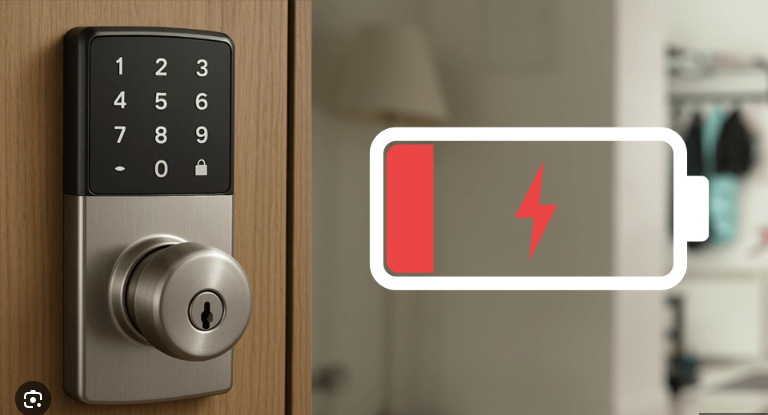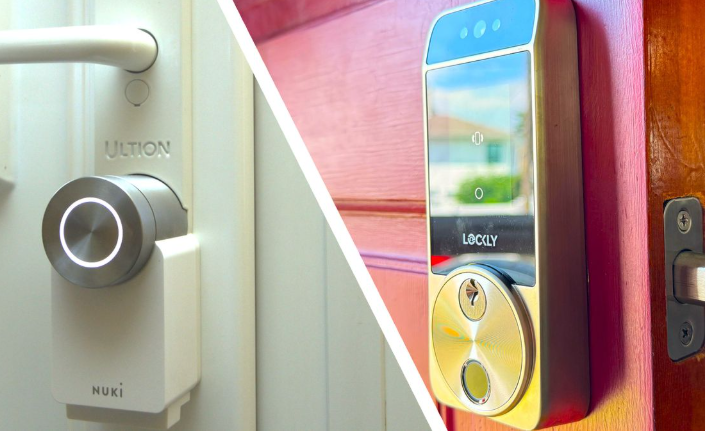The future of smart home locks is poised to transform how we secure our living spaces, blending cutting-edge technology with seamless user experiences. As we move deeper into 2025, smart home locks are evolving beyond keyless entry to become intelligent, interconnected systems that prioritize security, sustainability, and personalization. With advancements like AI-driven authentication, decentralized blockchain security, and eco-friendly designs, the future of smart home locks promises a world where homes are safer, smarter, and more adaptive to our needs. This article explores these emerging trends, offering insights into installation, setup, and maintenance to help you stay ahead in this dynamic landscape. For more detailed guidance, visit this smart lock guide.
The global smart lock market is projected to grow significantly, driven by rising demand for connected home solutions and urban security needs. From renters seeking flexible options to homeowners embracing full automation, the future of smart home locks is set to cater to diverse lifestyles. Let’s dive into the innovations shaping this exciting frontier.
AI-Powered Authentication: The Core of the Future of Smart Home Locks
Artificial intelligence is at the heart of the future of smart home locks, enabling adaptive and predictive security. AI-driven locks, such as next-generation models from brands like Lockly and Yale, analyze user behavior to optimize access patterns. For example, they can learn your schedule and auto-lock during your absence or unlock as you approach, using contextual data like time of day or location.
Advanced biometrics, including facial recognition and voice authentication, are becoming standard. These systems achieve over 99.5% accuracy, even in low-light conditions, ensuring smart lock safety. AI also detects anomalies, such as repeated failed attempts, and triggers alerts or temporary lockdowns. For families, this means personalized access—children, guests, or service providers can be granted temporary permissions tailored to specific times.
Smart lock setup for AI-enabled devices is straightforward, typically involving app-based calibration to register biometrics securely. For smart lock troubleshooting, AI diagnostics can identify issues like sensor misalignment, guiding users through fixes via smartphone apps. Regular updates ensure AI algorithms remain sharp, aligning with smart lock tips for long-term reliability.
Decentralized Security with Blockchain Integration
A groundbreaking development in the future of smart home locks is the adoption of blockchain for decentralized access control. Blockchain-based locks store access logs and credentials on a tamper-proof ledger, reducing the risk of hacks compared to traditional cloud servers. This ensures that even if a device is compromised, the core system remains secure.
For short-term rentals or shared spaces, blockchain allows temporary digital keys to be issued and revoked without central oversight, enhancing smart lock safety. Users can share encrypted access codes via apps, which expire automatically, eliminating the need for physical key exchanges. This is particularly appealing for Airbnb hosts or co-living environments.
Smart lock installation for blockchain-enabled models mirrors traditional setups but requires a stable internet connection for real-time ledger updates. To connect smart lock with blockchain systems, pair the device through a dedicated app, often requiring a QR code scan. Maintenance involves ensuring firmware compatibility with blockchain protocols, a key aspect of smart lock maintenance.

Seamless Integration with Smart Home Ecosystems
The future of smart home locks lies in universal connectivity, driven by standards like Matter and Thread. These protocols ensure locks integrate effortlessly with platforms like Apple HomeKit, Google Home, and Amazon Alexa, creating a cohesive smart home experience. For instance, a lock can communicate with lights to illuminate your entryway or with thermostats to adjust settings when you arrive.
Thread’s low-power mesh networking extends smart lock battery life to up to 18 months, while Matter ensures cross-brand compatibility. This eliminates the need for proprietary hubs, simplifying how to pair smart lock devices. Setup typically involves scanning a code and selecting your ecosystem, taking less than 10 minutes.
For urban dwellers, these integrations enhance security by linking locks to motion sensors or cameras, creating automated responses like locking doors if unexpected movement is detected. Smart lock troubleshooting for connectivity issues often involves resetting the network or updating the hub’s firmware, ensuring smooth operation.
Portable and Modular Designs for Flexibility
The future of smart home locks embraces flexibility with portable smart lock and modular designs. These are ideal for renters or those avoiding permanent modifications. Modular locks, like the Nuki Smart Lock Pro, attach to existing deadbolts, offering keyless entry via apps, biometrics, or even voice commands.
These locks support advanced features like geofencing, which auto-unlocks when you’re within a set radius, and are perfect for vacation homes or temporary residences. Installation is tool-free, making smart lock installation accessible to all. For renters, this ensures compliance with lease terms while benefiting from modern security.
Smart lock tips for portables include selecting models with strong adhesives and checking compatibility with your door type. Regular smart lock maintenance involves inspecting mounts for wear, ensuring long-term stability.
Sustainability and Energy Efficiency in Smart Home Locks
Sustainability is a cornerstone of the future of smart home locks, with manufacturers prioritizing eco-friendly materials and power-efficient designs. Rechargeable lithium-ion batteries now offer up to two years of smart lock battery life, while solar-powered options are emerging for outdoor applications, reducing environmental impact.
Energy-efficient chips and AI-optimized power management minimize consumption, with low-battery alerts sent via apps. Some models even harvest energy from door movements, a futuristic twist on self-sustaining tech. For smart lock maintenance, use USB-C charging ports for convenience and store backup batteries for emergencies.
In colder climates, where battery drain is a concern, opt for locks rated for extreme temperatures. These sustainable features align with home security tips, balancing eco-consciousness with robust protection.
Augmented Reality (AR) and Visual Interfaces
Augmented reality is entering the future of smart home locks, streamlining installation and user interaction. AR apps guide users through smart lock installation by overlaying digital instructions onto physical doors, ensuring precise alignment. Brands are developing AR interfaces for real-time lock status checks, displaying access logs or battery levels via smartphone cameras.
For smart lock setup, AR simplifies pairing by visualizing connection steps, reducing errors. Troubleshooting benefits too—AR can highlight faulty components, making smart lock troubleshooting intuitive. These advancements make smart locks more accessible, even for non-tech-savvy users.

Challenges and Solutions in the Future of Smart Home Locks
Despite their promise, the future of smart home locks faces challenges like cybersecurity and cost. Blockchain and end-to-end encryption address hacking risks, while two-factor authentication adds protection. Regular firmware updates are crucial, as outdated systems are vulnerable.
Costs range from $150 for basic models to $600 for advanced biometric or blockchain-enabled locks. However, long-term savings from reduced key replacements and insurance discounts offset expenses. For complex setups, professional smart lock installation ensures reliability, typically under $200.
Compatibility issues are fading with Matter, but older homes may require retrofit kits. Smart lock troubleshooting for connectivity involves checking Wi-Fi strength or resetting devices. Backup keys or manual overrides ensure access during power outages, maintaining smart lock safety.
Choosing the Right Smart Lock for the Future
Selecting from the future of smart home locks depends on your priorities: AI and biometrics for high security, portables for flexibility, or sustainable designs for eco-conscious homes. The best smart lock guide recommends checking Matter compatibility and ANSI Grade 1 ratings for durability. Test apps for user-friendliness and ensure multi-user support for families.
For seamless integration, prioritize locks with Thread or Wi-Fi. Explore resources like smart lock platforms for comparisons. Regular smart lock maintenance, like battery checks and firmware updates, ensures longevity.
Conclusion: Unlocking the Future of Smart Home Locks
The future of smart home locks is bright, with innovations like AI, blockchain, and sustainable designs redefining home security. These advancements offer unmatched convenience, safety, and adaptability, making smart locks essential for modern living. By embracing smart lock tips for setup, maintenance, and troubleshooting, you can harness their full potential. Visit trusted home security tips resources to explore options and secure your home for tomorrow’s world.